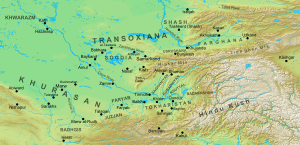Ahmad ibn Sahl
This family name originates from Kamgar (Gardizi, 332 AH), a Marvi landlord and land-owning magnate, and one of the sons of Yazdgerd III, the last Sassanid king (632-651 AD).
For instance, in Suzani's poem titled "Malik al-Dahaqin," he writes: مهتر بسی بود، نه همه چون تو کامران/ گل ها بسی بود، نه همه همچو کامگار در باغ مهتری چون گل کامگار باش/ تا نیکخواه بوی برد، بدسگال خار It appears that Suzani refers to someone named Kamgar, who is the son of Yazdegerd III.
Ferdowsi, in the story of Rostam and Shaghad, mentions a wise elder named Azadsarv, who accompanied Ahmad ibn Sahl in Marv and was a descendant of Sam Nariman: یکی پیر بود نامش آزاد سرو/ که با احمد سهل بودی به مرو The chronicles compiled by Azadsarv on Rostam were among the first, or possibly the first, collections of Iran's national stories in Persian, which eventually reached Ferdowsi.
This expertise, given the limited means of transferring knowledge in that era and the largely exclusive and intra-family nature of certain sciences, suggests the possibility that this family was connected to the Sasanians.
[1] However, he managed to escape and then returned to Merv, where he captured the local governor Abu Ja'far Ghuri and proclaimed his adherence to Samanid ruler Isma'il ibn Ahmad (r.
After a few weeks, however, after being lied to by Nasr, who had been promising him a certain thing, Ahmad shortly rebelled at Nishapur, made incursions into the Samanid city of Gorgan, and managed to repel its governor Karategin.

